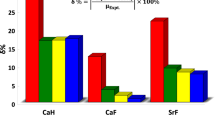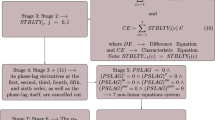Abstract.
We demonstrate the effectiveness of an economical scheme that uses numerical basis sets in computations with SIESTA. The economical basis sets demonstrated, in which high-level double-zeta basis plus polarization orbitals (DZP) are applied only for atoms of strong electronegativity and metal atoms while a double-zeta basis is applied to the rest of the atoms of small proton-bound carboxylic acid clusters and sodium–organic compounds, predict correct geometric structures very close to those obtained using DZP for all atoms. The use of economical basis sets can save about 30–50% of the CPU time that is used for calculations with large basis sets. This study provides a general guideline for basis set selection in SIESTA computations of large systems.
Similar content being viewed by others
Author information
Authors and Affiliations
Corresponding author
Additional information
Acknowledgement. The work described in this paper was fully supported by a grant from the Research Grants Council of the Hong Kong Special Administrative Region, China (project no. CityU 1033/00P).
Rights and permissions
About this article
Cite this article
Zhang, R., Zhang, Q. & Zhao, M. A scheme for the economical use of numerical basis sets in calculations with SIESTA. Theor Chem Acc 112, 158–162 (2004). https://doi.org/10.1007/s00214-004-0598-8
Received:
Accepted:
Published:
Issue Date:
DOI: https://doi.org/10.1007/s00214-004-0598-8




